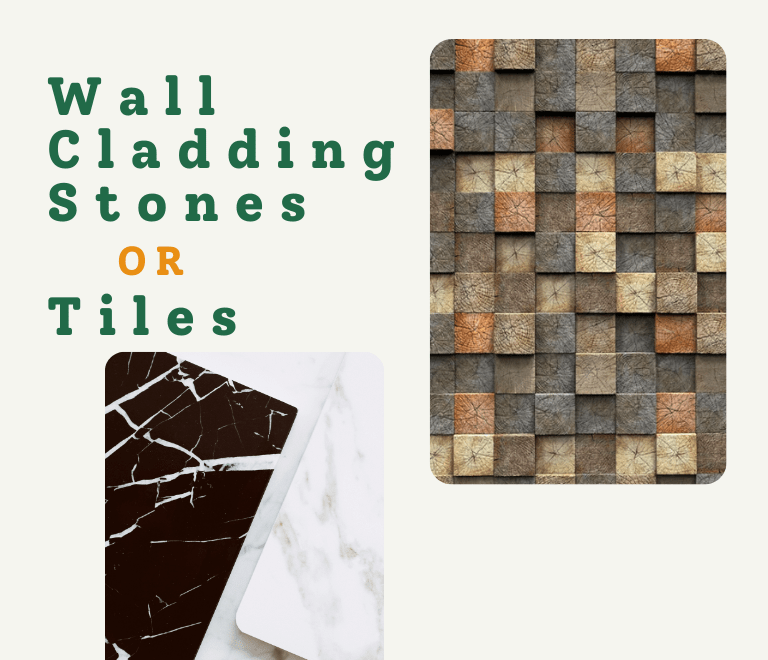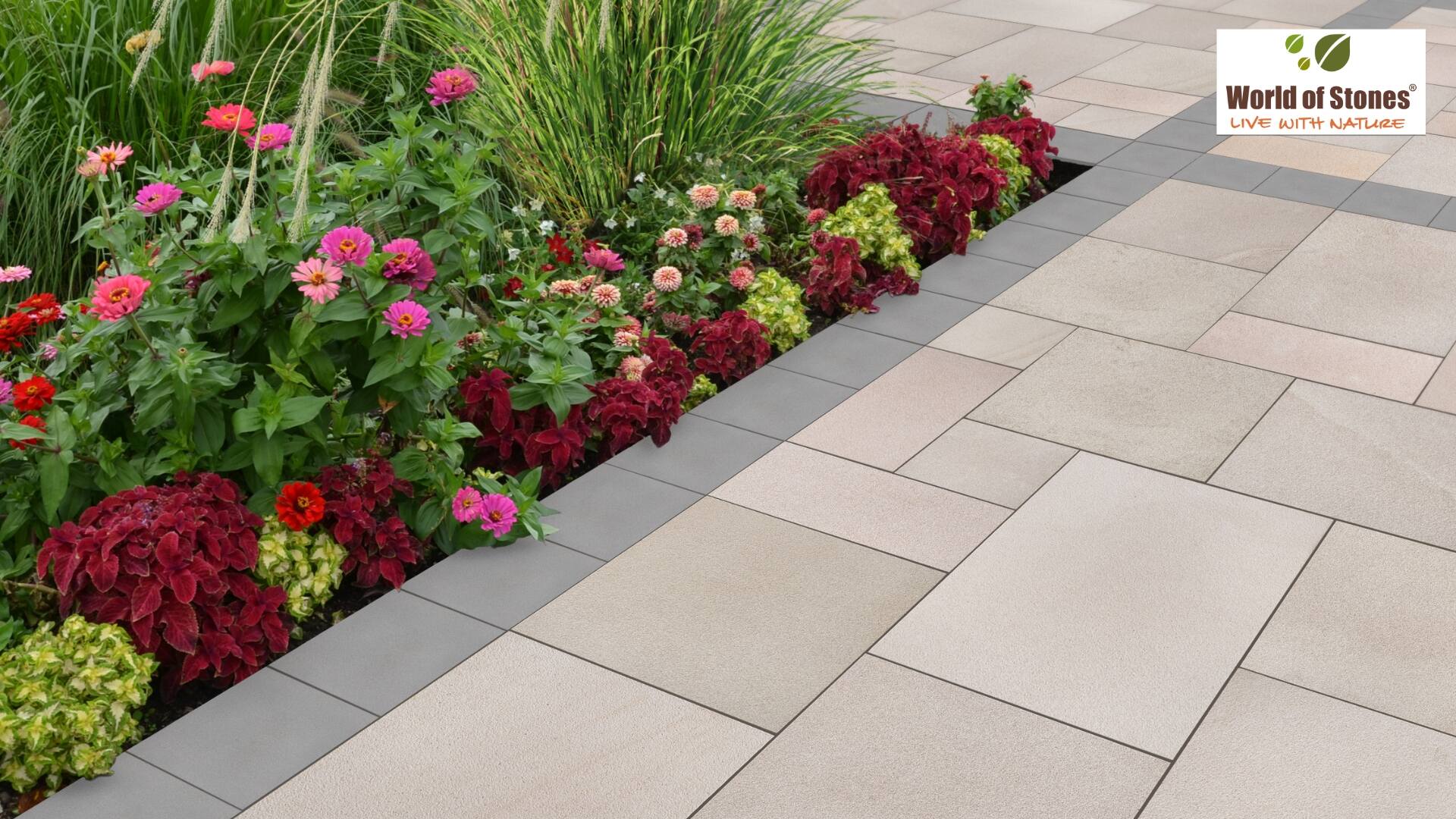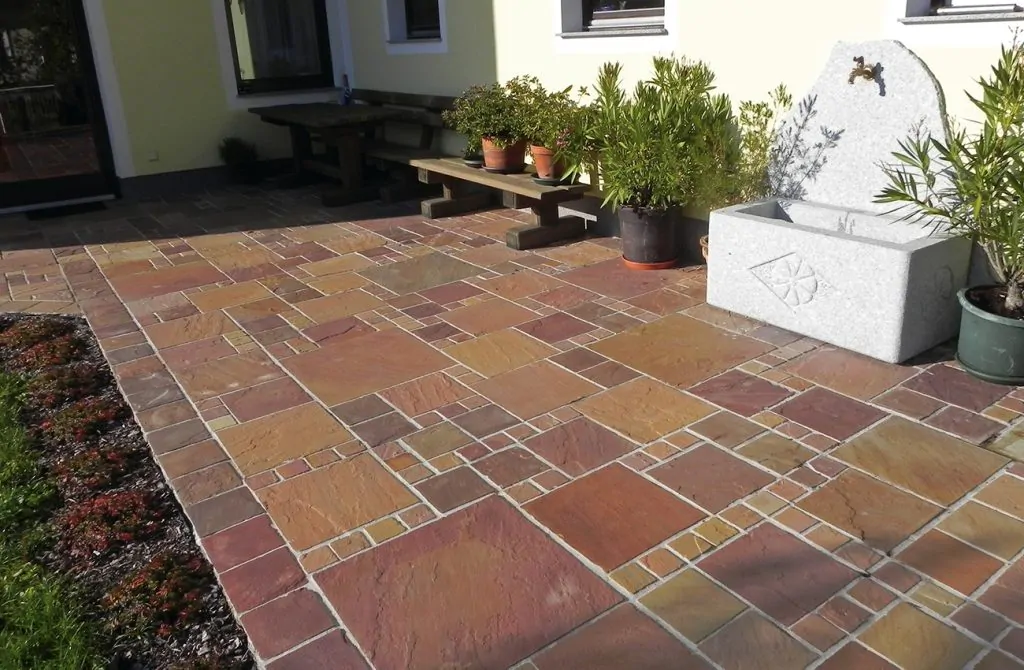More than merely supporting components, our walls serve as the blank canvas that we use to express the individuality of our rooms. However, simple walls can get boring, and touch-ups are necessary more often with traditional paint jobs. This is where Stone wall cladding enters the picture, providing an elegant and useful option for exterior and interior design.
But selecting the ideal Stone wall cladding might be intimidating due to the abundance of possibilities available (stones and tiles are just the tip of the iceberg). Designers, do not be alarmed! This in-depth guide will explore the world of wall cladding in 2024 and provide you with the knowledge you need to change your space and make an informed choice.
What is Wall Cladding or Wall Cladding Tiles?
Wall cladding is a decorative material applied to the existing wall surface for enhanced aesthetics and protection. It comes in various forms, from natural stones to manufactured tiles. Wall cladding tiles are individual units, typically smaller and more uniform than stone cladding.
sometimes called as wall tiles or panels. It accomplishes two things at once: it makes your area seem better and offers more security. With the wide variety of materials, textures, and colors available for wall cladding, you may customize your area and get the exact look you want.
But let’s take a closer look at the larger category of wall cladding materials before getting into the details of stones and tiles:
Natural Stone: Adding a touch of nature to your walls, natural stone cladding is the pinnacle of classic elegance and unmatched durability. Popular options include slate, which has an earthy tone and naturally textured surface; limestone, which is valued for its classic beauty and simplicity of upkeep; and granite, which is renowned for its strength and range of colors.
Aluminum Cladding: Sleek and modern in appearance, lightweight, and weatherproof, aluminum cladding is a popular material for modern buildings. Because of its adaptability, it can have a range of treatments, from brushed metal to vivid colors.
Wooden Cladding: Wooden cladding instantly improves the atmosphere of a place by bringing warmth and a hint of nature indoors. It does, however, need more upkeep than alternative solutions. Popular options include salvaged wood, which offers a touch of rustic charm and eco-friendliness, and cedar, which is renowned for its natural oils that ward off insects and rot.
Brick Cladding: Suitable for both traditional and modern settings, brick cladding adds a rustic appeal that is both classic and ageless. It is a wonderful option for energy efficiency because it provides good thermal insulation.
Fiber Cement Cladding: This adaptable choice provides a reasonably priced substitute for natural materials. It has fewer care requirements than stone or wood and is available in a variety of textures and patterns. In addition, fiber cement cladding is lightweight and simple to install.
Stainless Steel Cladding: Stainless steel cladding is a popular material for modern architecture and commercial buildings because of its great durability and sleek, industrial aesthetic. It has a great corrosion resistance and is very easy to clean.
The Allure of Tile and Stone: Recognizing Your Choices
Let’s explore wall cladding stones and tiles in more detail now. This is what distinguishes them:
Stones: Man-made tiles cannot compare to the distinctive character of natural stones. Because each piece has unique variations in color, texture, and veining, your wall will be a one-of-a-kind masterpiece. Often chosen options for wall covering consist of:
- Granite: This extraordinarily durable stone is stain-, heat-, and scratch-resistant, which makes it perfect for high-traffic spaces like bathrooms and kitchens. It is available in a variety of hues, ranging from striking green to traditional black.
- Slate: Slate has an earthy tone and naturally rough surface that give it a rustic character. It works well in places like restrooms and fireplaces where there is some significant moisture exposure.
- Limestone: Due to its easy maintenance and light color pallet, this attractive stone is highly valued. It’s best suited for low-traffic areas because it might be scratchy.
Tiles: Compared to natural stones, manufactured tiles provide a wider variety of design possibilities. They are made of a variety of materials, including metal, glass, porcelain, and ceramic. Below is a summary of some common tile options for wall cladding:
- Ceramic tiles: Available in a wide range of hues, designs, and textures, ceramic tiles are an affordable and adaptable choice. They are simple to maintain and beautifully replicate the appearance of actual stone. But if they are struck with a lot of force, they may chip or break.
- Porcelain tiles: These are a wonderful option for high-traffic areas because they are more durable than ceramic tiles. Because it is denser and less porous, stains, scratches, and moisture cannot penetrate it. There is a greater range of styles available for porcelain tiles that imitate natural stone, wood, and even fabric.
- Glass tiles: They give a room a sense of refinement and aesthetic appeal. Glass tiles give for endless design options because they are available in a variety of hues, textures, and even mosaic patterns. Still, They are prone to scratches and need to be cleaned carefully.
Exposing the Advantages: Why Opt for Wall Cladding?
Wall cladding is a wise investment because it provides a host of advantages for your residential or commercial area. Let’s examine a few main benefits:
Enhanced Protection: Wall cladding provides defense against impact, moisture, and weather damage. It can increase the longevity of your walls, particularly in outdoor situations where inclement weather is a concern. Natural stone cladding provides outstanding weather resistance and is renowned for its longevity.
Enhanced Aesthetics: The ability of wall cladding to transform is one of its biggest benefits. It gives your room a more upscale appearance by incorporating richness, depth, and texture. While tiles let you create unique patterns and designs with an infinite number of color and texture combinations, stone cladding delivers a timeless elegance.
Low Maintenance: A lot of wall cladding materials require less upkeep than conventional painted walls. Although natural stones like slate or granite are generally impervious to dust and filth, they may occasionally need to be sealed to preserve their luster. Porcelain tiles in particular are very low maintenance and easy to clean, which makes them perfect for busy homes.
Better Insulation: Brick and some natural stone varieties are good cladding materials since they have good thermal insulation qualities. Better energy efficiency results from this, keeping your room warmer in the winter and colder in the summer.
Fire Resistance: Certain materials, such as stone and specific kinds of tiles, provide differing degrees of fire resistance, adding an extra degree of security to your area.
Soundproofing: Wall cladding, particularly thicker materials like brick or some stone cladding, can also help with soundproofing. This can be useful to create a more tranquil atmosphere in a particular room or in high-traffic areas.
Increased Value: Adding a layer of sophistication and durability to your walls can potentially enhance the overall value of your property.
Selecting the Correct Fit: Things to Think About Before You Jump In
With your newfound understanding of wall cladding materials and their advantages, let’s move on to the aspects you should take into account before making your decision:
Beauty: This is really important! Take into account your room’s general design as well as the mood you like to set. While tiles offer a wide range of colors, patterns, and textures, stone cladding has a more traditional and opulent sense.
Durability: Select a material that is resilient to the environment and intended use. Stain- and scratch-resistant materials, such as granite or porcelain tiles, are necessary for high-traffic areas like bathrooms or kitchens. Weather-resistant cladding is necessary for exterior walls. Seek for slate or other weather-resistant tiles.
Maintenance: Take into account how much time and energy you’re ready to devote to cleaning. Even though natural stone is incredibly beautiful, it may need to be sealed sometimes. Porcelain tiles in particular are often low maintenance.
Cost: The cost of wall cladding materials varies greatly. Though tile costs might vary based on the type and style, natural stone is often more expensive than tiles. Make a final selection after comparing options and setting a reasonable budget.
Installation: The total cost may vary depending on how complicated the installation is. While certain types of tiles can be installed yourself, stone cladding usually requires professional installation.
Beyond the Basics: Frequently Asked Questions
Still have questions? Here are some frequently asked questions about wall cladding stones and tiles:
Q: What is natural stone cladding?
Natural stone cladding is a type of wall cladding made from real stone like granite, slate, or limestone. It offers a timeless beauty and superior durability.
Q: Which stone is good for wall cladding?
The best stone for wall cladding depends on your specific needs and preferences. Granite is highly durable and comes in various colors. Slate offers a textured, earthy look. Limestone is known for its classic beauty and ease of maintenance. Consider consulting a professional to determine the ideal stone for your project.
Q: Where to use wall cladding material?
Wall cladding can be used on both interior and exterior walls. Popular interior applications include accent walls, fireplaces, backsplashes, and bathrooms. Exterior walls benefit from the added protection and enhanced aesthetics that cladding provides.
Q: What are the best cladding tiles for exterior walls?
Exterior walls require cladding that can withstand harsh weather conditions. Good options include weather-resistant tiles like porcelain or fibre cement cladding that mimics natural stone.
Q: Can I install wall cladding myself?
The answer depends on the material chosen. Stone cladding typically requires professional installation due to its weight and the expertise needed for cutting and fitting. Certain types of tiles, especially lightweight options like ceramic or vinyl, can be DIY-friendly. However, always ensure you have the necessary skills and tools before attempting DIY installation.
By considering these factors and the information provided, you can confidently choose between wall cladding stones or tiles and elevate your space.






